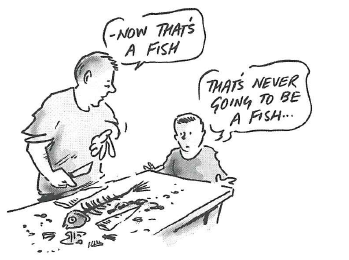1.1 Building up a definition
In Week 2 I compared systemic and systematic thinking. In doing so I noted that systemic thinking looks at wholes made up of components rather than focussing on the components and that each takes a different view on how the system relates to the world we experience. In particular there is a difference between talking about systems that we, as humans, have constructed (e.g. transport systems) and ‘natural’ systems we observe (e.g. respiratory systems). Nevertheless, these things we call systems consist of things (or elements, the term used by Ackoff (1981) in Week 2 or entities which I have also used) that interact with each other and which have a designed purpose (i.e. is purposeful) or can be said to have a purpose even if that has not been planned or designed (i.e. is purposive) as also noted in Week 2.
So my first attempt at a definition is that a system is ‘a set of things interconnected for a purpose’.
This definition needs a little elaboration. First, the ‘things’ may be physical objects – like cars, roads and railway lines – or they may be activities – like those needed to control traffic flows. They may even be ideas, such as those which make up a set of policies or code of practice. It is helpful to have a generic word which will cover all these possible ‘things’, and because that word suggests only physical objects, I’m going to use the word ‘components’ (rather than elements) instead.
So I want to redefine a system as ‘a set of components interconnected for a purpose’.
Next, I want to look again at the idea of ‘purpose’ in the definition. On the one hand, it is natural to use the word ‘system’ only when a set of components seems to have some purpose that we have ascribed to it – some aim or goal. So, the purpose of a car braking system is to enable us to stop the car, and the purpose of the respiratory system is to enable our bodies to take in oxygen. On the other hand, it may occur to you that there are some things called systems in common speech which don’t seem to have a purpose; most people would be lost for words if you asked them to describe the purpose of the solar system. In that case why not just drop this idea of purpose from the definition?
There is a good reason not to do so. When you are confronted with a set of components and you want to find ways of working with them, or making them work better, it is always useful to look at them as if they had a purpose. In other words, the interconnected set of components – the system – has been identified by someone as being of particular interest. An urban transport system may have grown up over the past fifty or more years, without any overall purpose; but if you want to re-plan or re-design it, it will always be helpful to look at it, say, as if it had the purpose of enabling people to move easily around the city. In other words, for practical purposes, this course is only going to be concerned with systems where those sets of interconnected components – whether ideas, objects or activities – can sensibly be described as if they had a purpose because ‘we’ have an interest in them.
I can now elaborate on my definition of a system of interest to include other aspects, namely:
- A system is an assembly of components connected together in an organised way.
- The components are affected by being in the system and the behaviour of the system is changed if they leave it.
- This organised assembly of components does something.
- This assembly as a whole has been identified by someone who is interested in it.
Note that I have changed from using set of components to an assembly of components as the word assembly also implies that the components are organised.

